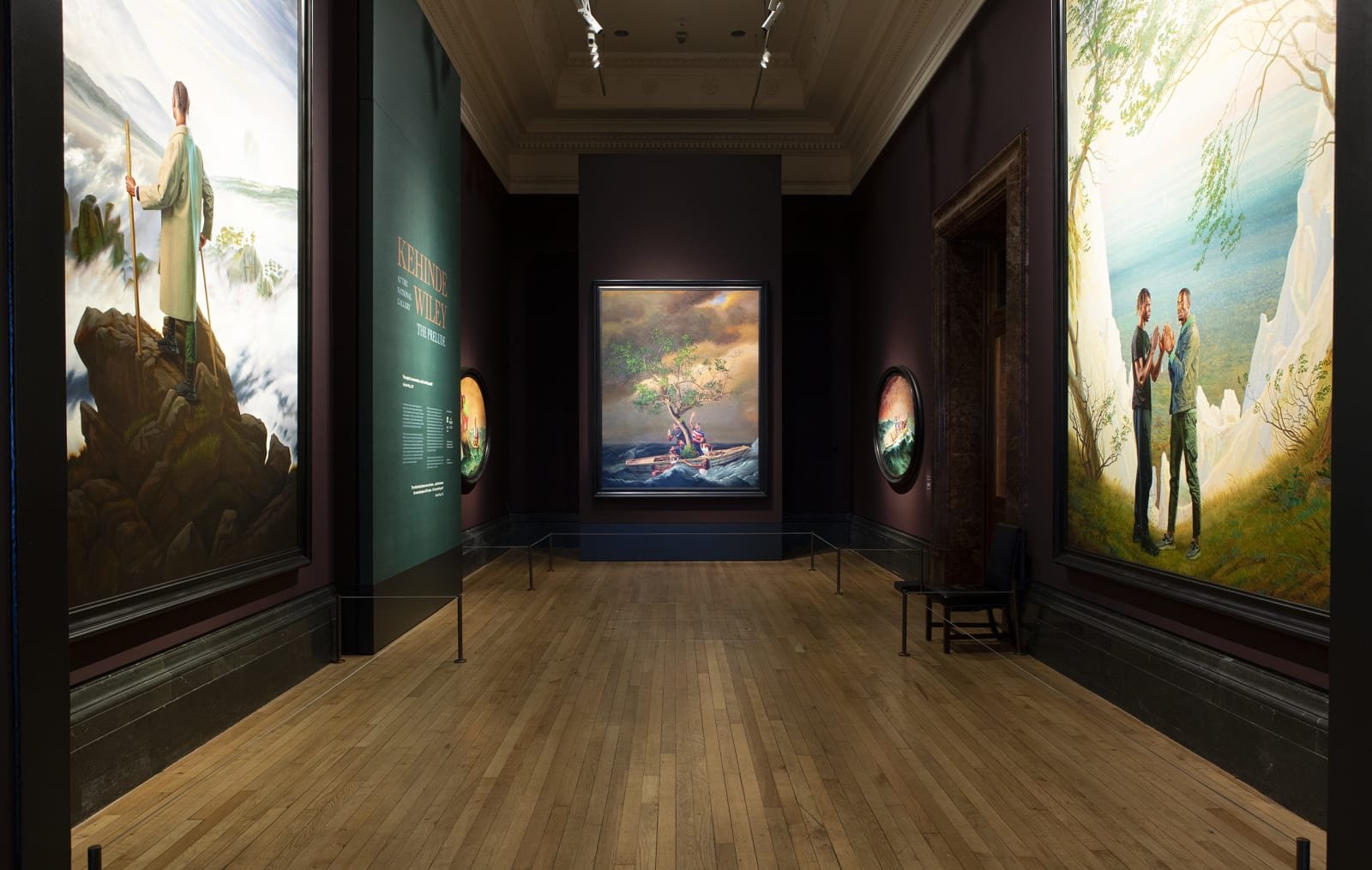The Prelude by Kehinde Wiley
⏱ 4 min
On a rainy Sunday afternoon, in the middle of Trafalgar Square, I found myself transported into a 360 degree, angular experience of snowy icecaps and divine introspection. Kehinde Wiley’s latest exhibition at The National Gallery, is showing in London until 18th April 2022. The American artist, is one who I first encountered while writing my thesis on Afrofuturism in 2019. Now 3 years later, I am delighted to see that mainstream audiences around the world, and here in the UK are invited into Wiley’s captivating way of seeing.
Kehinde Wiley frames black figures in spaces where they were, up until this point, often unseen. The sensitive and much often spoken about discussion surrounding race, representation and identity, are inevitably reflected in the critical analysis surrounding his paintings. His significant use of scale to frame and compose the portraits of those he depicts, shines a light on their superiority and importance. A once overlooked being, is now the centre of the stage.
Within the gallery space, an audience are presented with a selection of realism paintings which have an immense photographic quality - it is quite honestly breathtaking. It feels as though Wiley’s figures are there directly, looking back at us. The power surrounding this is comparable to the techniques found in paintings by Old Masters, and this is what draws Kehinde Wiley’s work as Afrofuturistic in my opinion. This elegant reframing of the past, and reinventing it for black identifying audiences, is the essence of afrofututurism. Black people are thus the focal point in Wiley’s work for our adoration.
It was a pleasure to see so many people from different demographics - young, old, white, black, asian, and so on… all enjoying the wonderful art on display. Back in 2014, when I started to study art, educationally speaking, it was a rare sight to see people of colour submerged in the walls of artistic spaces. And to this date, stats show that art spaces are commonly attended by white demographics. It is clear that this is due to the underrepresentation of authentic stories, that channel light energy for black audiences. However, in 2022 we are experiencing a true turning point. The start to something new - the much awaited change is here, and I am so honoured to be sharing this article on Kehinde Wiley.
Now, let’s jump into the film ‘The Prelude’. The cinematic extension of Wiley’s paintings reminded me a lot of the film Moonlight by Barry Jenkins. Not only did the film skilfully develop the cues found from his paintings, but the use of story telling through movement created an immersive and captivating experience, making the characters powerful and alive. The narration too unfolded rich concepts surrounding identity, godliness and the divine experience of understanding how to live in solitude and share life peacefully with others. The main takeaway for me when watching this was the enriching change that is taking place right now. We are living in an age, where we can create new and uplifting ways of seeing to educate future generations with energy that is loving, anti-discriminatory and soothing to an anxiety driven culture.
Will you be taking a visit to Kehinde Wiley’s exhibition this month?



